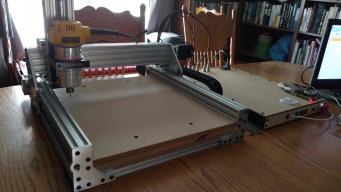C-Beam cnc
Discussion in 'CNC Mills/Routers' started by Kyo, Jun 24, 2016.
C-beam Sphinx
Discussion in 'CNC Mills/Routers' started by Kyo, Jun 24, 2016.
A strong desktop cnc router that will enable you to make larger aluminium plates without taking up to much room. Simple, strong and opensource ! Build one today..
Page 17 of 20
Page 17 of 20

